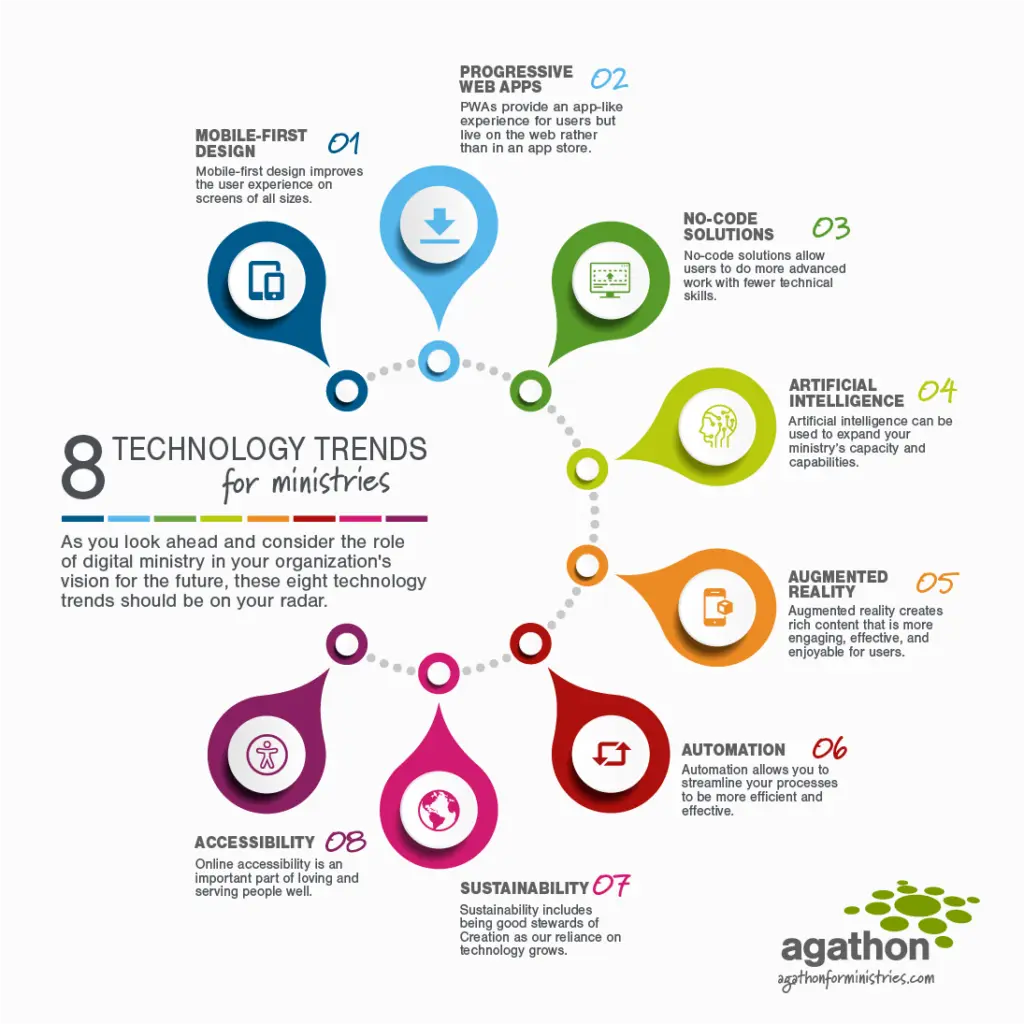
In 1965, Gordon Moore posited that the number of transistors per microchip would double every year. While this prediction has changed over time, it continues to guide forecasts for hardware development. Hardware isn’t our specialty here at Agathon. But it’s easy to see how we can extrapolate Moore’s Law to the advancements in software as well. Just consider the technology available to most home users 30 years ago, 10 years ago, and today.
For ministries, the past few years meant the accelerated adoption of much of this technology even further due to the challenges and opportunities presented by the COVID-19 pandemic.
As you look ahead and consider the role of digital ministry in your organization’s vision for the future, we’ve identified eight technology trends that should be on your radar. This is not a call to implement every one of these today. Rather, it’s an opportunity to begin thinking about which ones might impact your ministry in the future.
| Table of Contents 1. Mobile-First Design 2. Progressive Web Apps 3. No-Code Solutions 4. Artificial Intelligence 5. Augmented Reality 6. Automation 7. Sustainability 8. Accessibility |
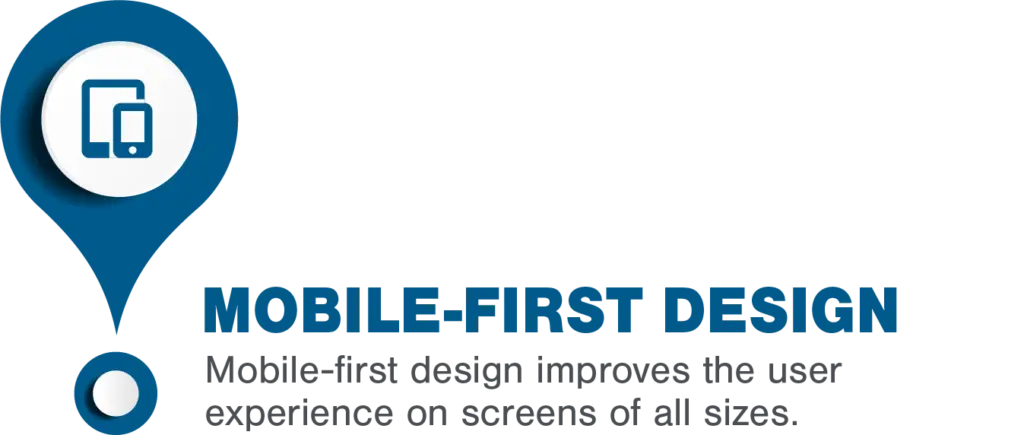
1. Mobile-First Design
Mobile-first design is a design philosophy that aims to create better experiences for users by starting the design process from the smallest of screens: mobile.
What does mobile-first design mean for digital designers? Inside Design
A few years ago we would have called this section “responsive web design.” We knew mobile was important, but it was still secondary to desktop.
But as the use of smartphones and tablets has become ubiquitous, we’ve realized a responsive design isn’t enough. Instead, it makes sense to design websites for the smallest screen first. Many features that improve the mobile experience—lots of whitespace, large tap targets, etc.—are also beneficial on larger screens.
This hasn’t always been realistic, especially for ministries working with tight budgets. In the past, web and mobile technologies were decidedly separate and would need two separate development projects. Today, tools such as React and Flutter allow developers to code for several platforms at once. This makes it easier for you to build mobile first while still stretching your digital ministry budget.
This “write once, deploy everywhere” approach is also beneficial for the teams working on these products. It allows a single team member to service many technologies and creates redundancy across larger teams.
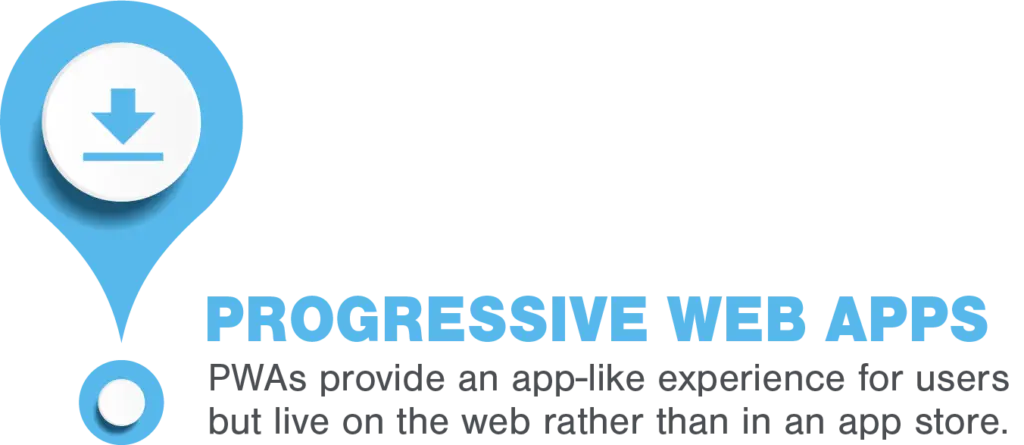
2. Progressive Web Apps (PWA)
Progressive Web Apps use modern web capabilities to deliver an app-like user experience. They evolve from pages in browser tabs to immersive, top-level apps, maintaining the web’s low friction at every moment.
Getting Started with Progressive Web Apps, Google Developers
While we’re on the topic of mobile, it makes sense to consider progressive web apps (PWAs) as well. PWAs are websites that function like apps on desktop or mobile. These aren’t for simple informational websites but for interactive tools, account management, or internal applications.
Native apps can be expensive, time consuming to update, and are subject to various app store rules, while creators have complete control over their PWAs. Like a traditional app, users can download PWAs to the home screen of their phone or tablet. And they function like a native app. They also allow push notifications and function better with poor internet. Plus, there are no app store fees to pay. And because they’re built on the web, you can update the content in real time.
Because there is no central marketplace for PWAs, the app store may still be the answer for public-facing apps. Internal applications, on the other hand, should always function as PWAs. Similarly, apps that are paying exorbitant fees, or those that receive constant updates, may do better as PWAs. And ministries concerned about censorship or the rules governing their app may also find PWAs to be the right solution.
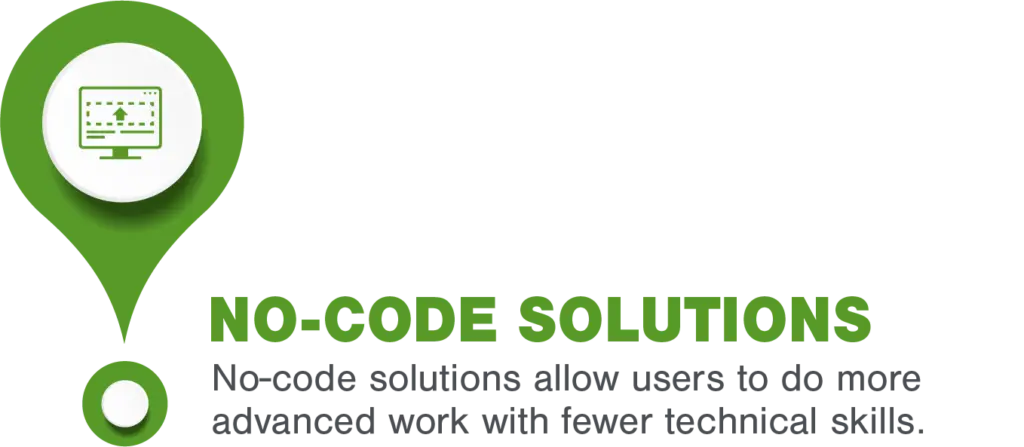
3. No-Code Solutions
A no code development platform is a tool for building software applications without coding; a popular and promising alternative to traditional software development for non-technical business users hoping to build their own full-fledged applications.
What is no code? Codebots
No-code solutions are around us already: WordPress plugins add functionality with one click; tools such as Airtable or Zapier optimize your communication, processes, and workflow; and website builders like Webflow and SquareSpace allow you to quickly build a site without technical skills.
The terminology itself can be confusing. “No code” doesn’t mean there is no need for human involvement at all. Rather, these platforms often function through a drag-and-drop interface. This helps team members to do more advanced work with fewer technical skills. Which, of course, allows your ministry to accomplish more with fewer resources and a lower learning curve.
Does that mean agencies like Agathon will no longer be needed in the future? We sure hope not! Developers will continue to be on the leading edge of these advances. And as good as no-code solutions have become, they aren’t the solution to every problem. We will continue to augment internal teams and guide organizations with strategy and user experience tools to help them best serve their users.

4. Artificial Intelligence
Artificial intelligence leverages computers and machines to mimic the problem-solving and decision-making capabilities of the human mind.
What is Artificial Intelligence, IBM
When we hear artificial intelligence (AI), we often jump right to the sci-fi idea of robots taking over the world. But that reality is a lot further off than most people imagine. However, AI in its current form can be a useful tool for the work of most organizations.
In fact, you’re probably using AI already in your daily work. Think of things like your phone or email’s autocomplete feature, Grammarly’s writing feedback, or your bank’s transaction verification tools. AI is increasingly integrated in our everyday life, and it’s not going anywhere.
Although there may come a day when ministries build their own AI, you can begin by taking advantage of existing tools now. For example, Answer The Public helps organizations understand what users are searching for on the internet. There are numerous programs that help create blog posts and other content. Tools such as Tableau help organizations jumpstart their reporting efforts by identifying anomalies and reporting against data. And others can help predict or forecast what’s to come based on data trends.
This type of artificial intelligence helps ministries expand their capacity and capabilities, augmenting their current staff rather than replacing them.

5. Augmented Reality
Virtual reality and augmented reality accomplish two very different things in two very different ways, despite their devices’ similar designs. VR replaces reality, taking you somewhere else. AR adds to reality, projecting information on top of what you’re already seeing.
Augmented Reality (AR) vs. Virtual Reality (VR): What’s the Difference? PCMag
Like, AI, virtual reality (VR) and augmented reality (AR) may bring to mind the most extreme examples of these technologies such as “attending” church from home through a virtual reality headset.
Actually, augmented reality is much more accessible. It can be used, for example, to add interactivity to visual content, whether in-person or digital. (Many of us are familiar with the Pokemon Go craze of a couple of years ago!) This type of rich content is more engaging and can increase both the effectiveness and the appeal for users.
Imagine the groundbreaking for a new facility, where people can hold up their phones to see an artist’s rendition of the building. Or picture the Bible Project videos brought to life in your living room. Imagine helping your donors experience the sights and sounds of the communities they’re supporting. Or envision online study tools that feel almost like real books and Bibles. It’s hard to anticipate all the ways this technology will be used in the years to come. But you should expect to see many of these ideas brought to life!
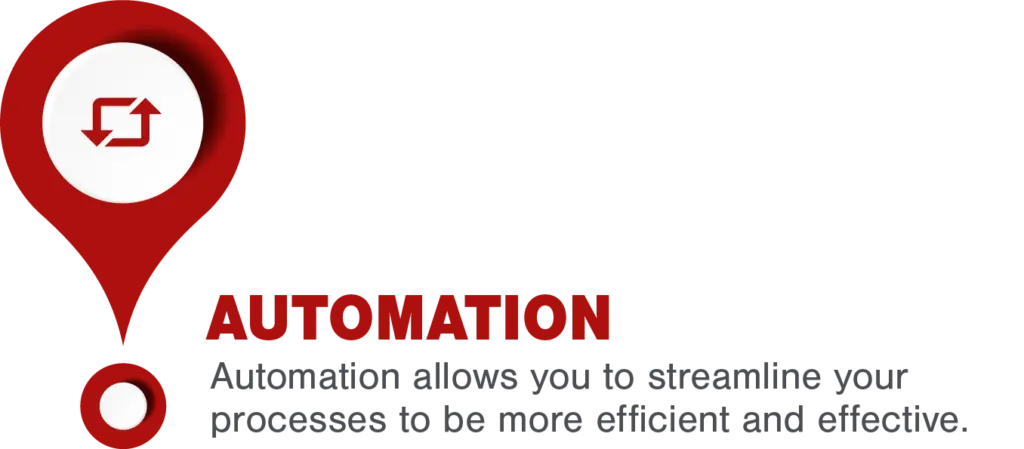
6. Automation
The dictionary defines automation as “the technique of making an apparatus, a process, or a system operate automatically.” We define automation as “the creation and application of technology to monitor and control the production and delivery of products and services.”
What is Automation? ISA
Automation in general is not a new trend; however, it’s application to digital ministry will continue to increase over time as tools and best practices develop:
Marketing automation
You’re probably already familiar with marketing automation: a welcome series for new newsletter subscribers, a drip campaign during fundraising drives, or a tool to manage and schedule your social media messages.
As this technology advances, you will be able to do even more to personalize the experience of your key stakeholders—whether donors or constituents—based on their demographics and the actions they take.
Business process automation
Marketing automation allows you to reach out more efficiently and effectively; business process automation helps you streamline your workflows internally. This includes things like a customer service workflow to help agents route and respond to emails. But it could also include time tracking tools, integrations to streamline data entry, etc.
Test automation
Finally, since we’re talking about digital ministry, it’s worth including test automation within this section. Whether developing software or publishing content, every human action creates an opportunity for error. Test automation can reduce friction and human error by scheduling and making processes predictable, automating things such as accessibility check-ins, and facilitating security checks for accountability.
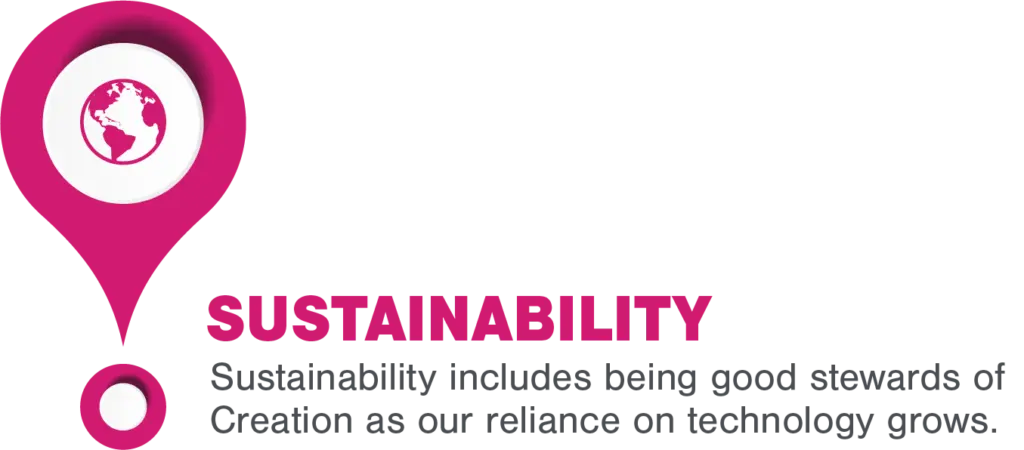
7. Sustainability
Sustainable practices support ecological, human, and economic health and vitality. Sustainability presumes that resources are finite, and should be used conservatively and wisely with a view to long-term priorities and consequences of the ways in which resources are used. In simplest terms, sustainability is about our children and our grandchildren, and the world we will leave them.
What is sustainability? UCLA Sustainability
Tech trends often compete with the more human side of ministry. Or, if they don’t compete, they certainly present tradeoffs. We’ve seen this acutely in the last two years: Zoom and other digital platforms provided a way for churches to meet their congregants’ needs during pandemic lockdowns. But this remote access also presented challenges in reconnecting communities as lockdowns ended.
Sustainability might seem like a strange topic to include on a list of trends. In reality, your ministry cannot ignore the growing importance of sustainability as a whole.
John Elkington coined the phrase “triple bottom line” as a sustainability framework to measure an organization’s economic, social, and environmental impact. To simplify it in the context of ministries, a sustainable organization will:
- care for both the people they serve and the people who serve
- responsibly manage donations and expenses
- be a good steward of creation
Sustainability for ministries
In the context of digital ministry, there are real implications of understanding the energy usage of your systems, websites, and apps. You may not have control over the infrastructure or bandwidth powering your tools. But understanding your site’s consumption and how you can offset that allows you to work toward a more sustainable future.
For example, there are tools that will tell you what type of resources your site requires just to load. They can even go so far as to make recommendations (e.g., white screens use more energy to render than dark screens) and help you understand the implications of various design decisions.
While sustainability is a bit nebulous to define, being good stewards of people, planet, and profit (or donations) is likely to become more important—not less—as time passes.
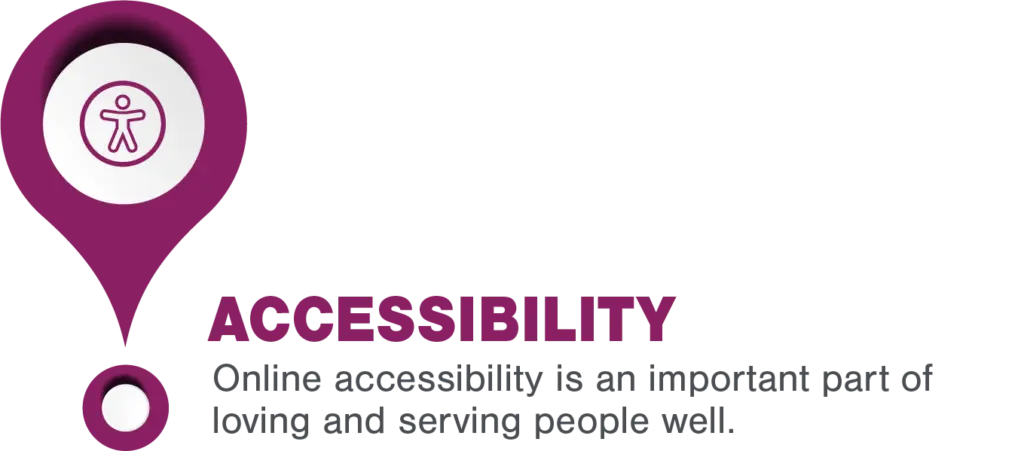
8. Accessibility
Web accessibility is the inclusive practice of ensuring there are no barriers that prevent interaction with, or access to, websites on the World Wide Web by people with physical disabilities, situational disabilities, and socio-economic restrictions on bandwidth and speed. When sites are correctly designed, developed and edited, generally all users have equal access to information and functionality.
Web accessibility, Wikipedia
At Agathon, we believe accessibility is an important part of loving and serving people well. We also believe accessibility is good for everyone.
Accessibility impacts:
- Your ability to provide services,
- How you connect with supporters and donors,
- Whether your digital ministry feels welcoming, and
- How well you can spread awareness of the work you’re doing.
This is no longer something you can ignore or put off for tomorrow; the importance of building accessible websites and apps is only going to increase.
It’s unlikely your organization will dive into all of these trends at once. But an important part of setting your ministry’s digital strategy is understanding the big picture trends and envisioning how those might help you to be more effective in ministry.